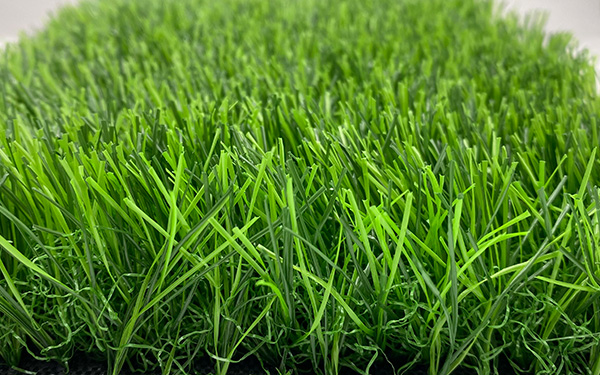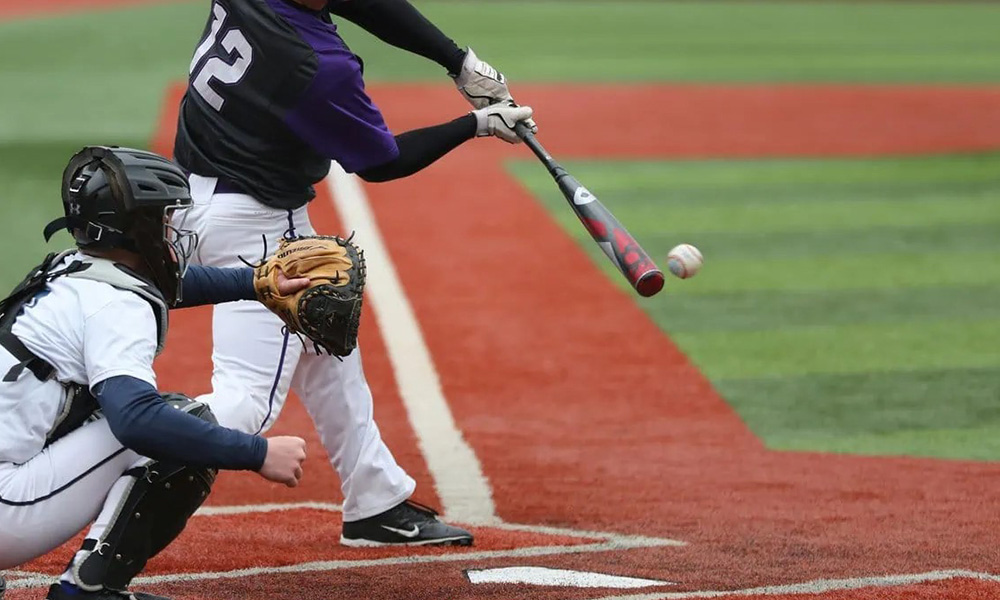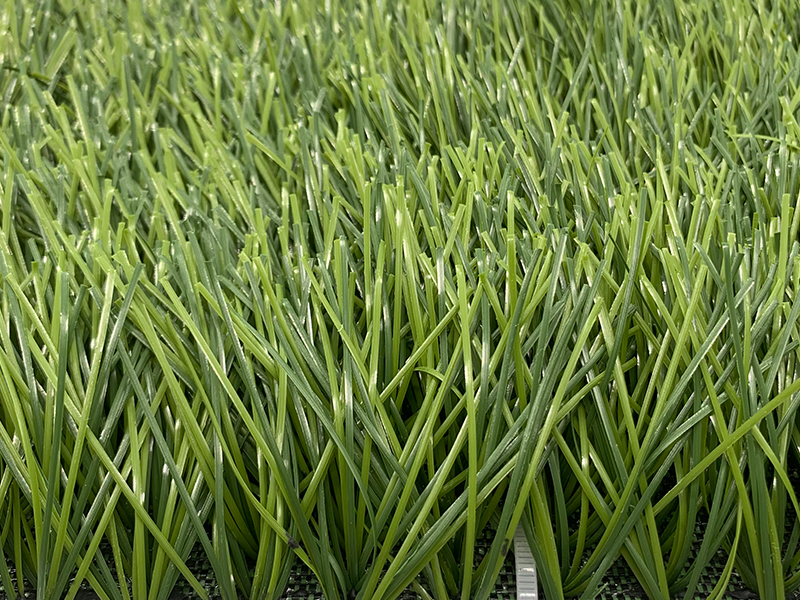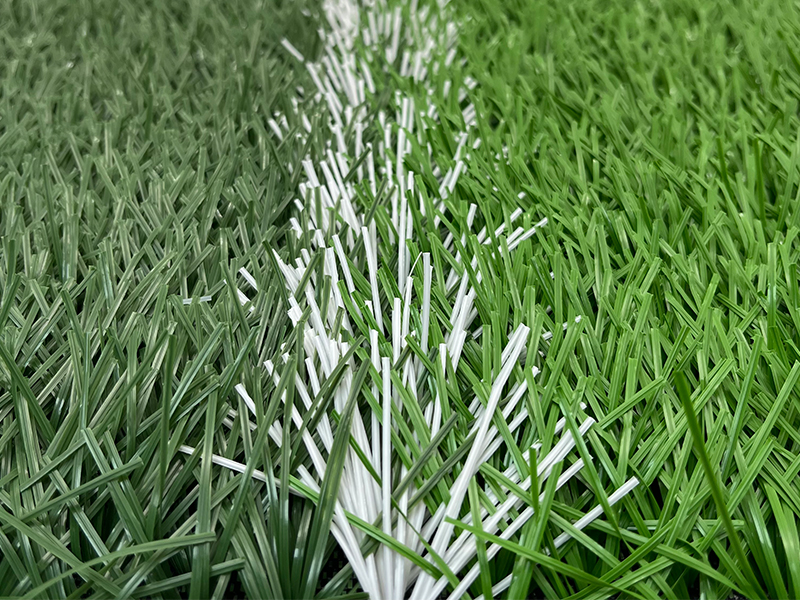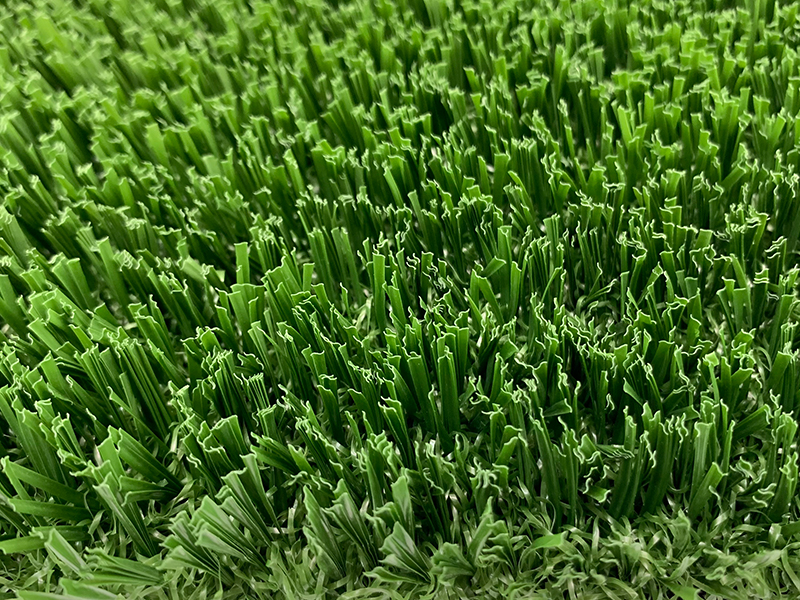What is artificial grass made of?
Today, as people pursue beauty, low maintenance and environmental protection, artificial turf, as an ideal substitute for natural turf, is widely used in various places such as sports venues, parks, and courtyards. It not only has good durability, but also saves water resources, reduces maintenance costs, and brings convenient user experience.
Main raw materials of artificial grass
The main component of artificial turf is synthetic fiber, usually made of high-performance plastic materials such as polypropylene (PP) or polyethylene (PE). These materials have the characteristics of wear resistance, UV resistance, and waterproofness, allowing artificial turf to maintain stable performance in various climatic environments. In addition, in order to increase comfort and visual effects, color stabilizers, softeners, etc. are added during the production process to make artificial grass more natural and soft, and enhance the user experience.
Form and Craftsmanship
- Monofilament: A single, independent blade of grass, closely resembling natural grass in appearance. It offers excellent athletic performance and is less prone to dirt accumulation, making it the mainstream form for high-end artificial turf.
- Fibrillated Filament: Made by stretching and weaving thin plastic sheets into a mesh structure. It offers high coverage density, strong stability, and excellent cost-effectiveness, commonly used in budget-friendly fields or entry-level applications.
- Mixed Filament: Achieved through two methods: one is co-extruding different materials (such as PE and PP), and the other is adding nylon reinforcing ribs to the monofilaments, thus controlling costs while maintaining the overall performance of the turf.
Other Structures
Adhesive and Base Layer
The grass fibers don't grow directly onto the base fabric; instead, they are firmly secured through tufting and coating processes.
1. Primary Backing
This layer is typically a mesh or non-woven fabric made of PP or PET. Grass fibers are pierced through this backing layer using a tufting machine to form tufts. This fabric has extremely high tear resistance to withstand the significant tensile forces during installation and use.
2. Secondary Coating
This is the "cement" that secures the grass fibers. It's an adhesive layer applied to the back of the primary backing, wrapping and securing the roots of the grass fibers to prevent them from being pulled out.
- SBR Latex: A traditional material, offering good elasticity and low cost.
- PU: A representative of the new generation of environmentally friendly coatings. It boasts stronger adhesion, greater flexibility and durability, is lightweight, has excellent water permeability, and is virtually odorless. PU backing better adapts to temperature changes, extending the overall lifespan of the lawn.
3. Infill Materials
Quartz Sand: Keeps grass fibers upright, increases overall turf weight, and prevents wrinkling and shifting.
Styrene-butadiene rubber (SBR) Granules: Offers good cushioning and rebound, and is relatively inexpensive.
EPDM Granules: Non-toxic, odorless, resistant to aging, and stable. Provides superior cushioning and low-temperature elasticity, and effectively reduces surface temperature.
2. Shock Pad
For professional sports fields, an additional shock-absorbing pad is laid between the base layer and the turf. It absorbs impact during sports activities, maximizing joint protection for athletes and reducing sports injuries such as sprains and falls.
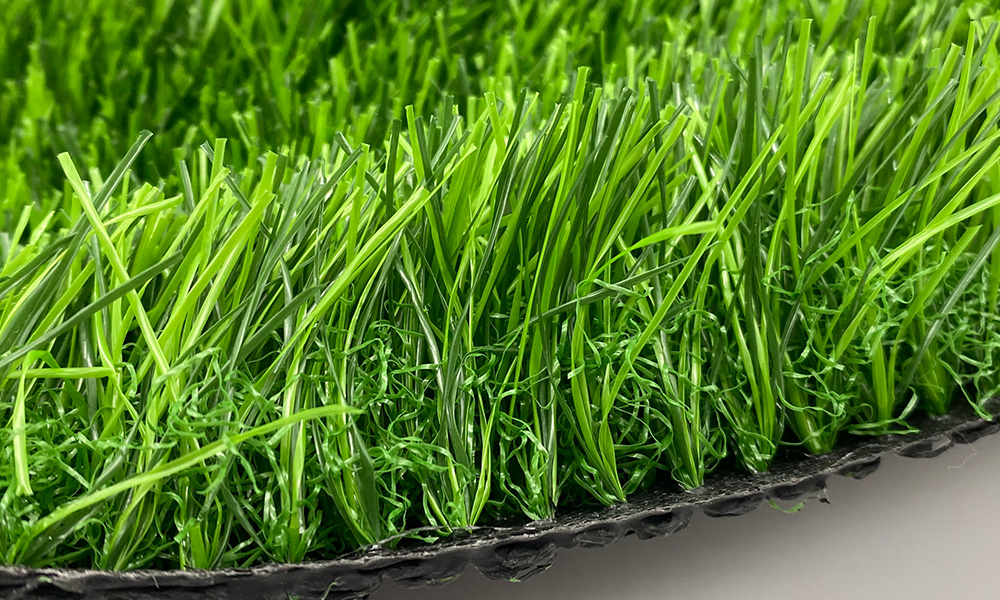
Production process of artificial grass
The manufacturing process of artificial grass involves multiple refined process links, including:
Plastic fiber preparation: Polyethylene or polypropylene particles are heated and extruded to form filaments or flat synthetic fibers.
Spinning and gluing: The fibers are specially treated to make them more resilient, and special glue is coated on their backing to enhance the adhesion and stability of the turf.
Grass weaving: Using advanced weaving technology, the fibers are fixed on the base fabric to form a neat and uniform lawn structure.
Trimming and molding: According to customer needs, the lawn is trimmed, cut, punched and other processes are carried out to ensure that it meets the predetermined specifications and effects.
Quality inspection and packaging: Artificial grass must undergo strict tests such as wear resistance, tensile resistance, UV resistance, and drainage performance before leaving the factory to ensure the stability and durability of the product.
Quality standards for artificial grass
The performance of high-quality artificial grass depends not only on the production process, but also on the raw materials and technology. For example, UNIGRASS artificial grass adopts internationally advanced manufacturing technology and uses high-density and high-elasticity synthetic fibers to ensure uniform grass, natural color and soft texture. At the same time, its weather resistance is excellent, it can resist the influence of extreme weather, and maintain lasting beauty and comfortable foot feel.
Wide application of artificial grass
With the continuous advancement of technology, artificial grass has been widely used in many fields, including:
Sports fields: football fields, tennis courts, basketball courts, golf courses and other places, providing high-quality sports experience.
Public greening: parks, schools, community squares and other places, adding green landscapes to the city.
Home courtyard: laying artificial grass in courtyards, terraces, balconies and other areas to create a comfortable leisure space.
Commercial places: shopping centers, exhibition halls, offices and other areas, as decorative materials to enhance the aesthetics.
Choosing the Ideal Lawn Based on Performance
* Private Gardens/Balconies: Prioritize turf with all-PE grass fibers and PU backing, emphasizing aesthetics, softness, and environmental friendliness (odorless).
* Community/School Sports Fields: Choose PE or PE&PA blended grass fibers with PU backing, infilled with environmentally friendly EPDM granules, ensuring safety, durability, and no pollution during sports activities.
* Professional Soccer Fields: These require the highest performance, often using a combination of high-performance PE monofilaments, nylon reinforcement, PU backing, a professional shock-absorbing layer, and environmentally friendly granule infill.
* Landscape Decoration: PP or economical PE turf can be chosen, requiring no infill, focusing on visual appeal and cost.

Development prospects of artificial grass
Artificial turf has become an important choice in the global market due to its durability, environmental protection and low maintenance. With the development of science and technology, the production process of artificial grass will be more refined in the future, the materials will be more environmentally friendly, the performance will be better, and the scope of application will be further expanded. Whether it is a sports venue, public greening or home decoration, artificial grass will create a better living environment for people.
Summary
Artificial grass is an environmentally friendly material made of synthetic fibers. After precise production processes and strict quality inspections, it has excellent durability and wide application value. With the continuous advancement of science and technology, the performance and appearance of artificial grass will be closer to natural turf, providing global users with more environmentally friendly, economical and convenient ground laying solutions.
